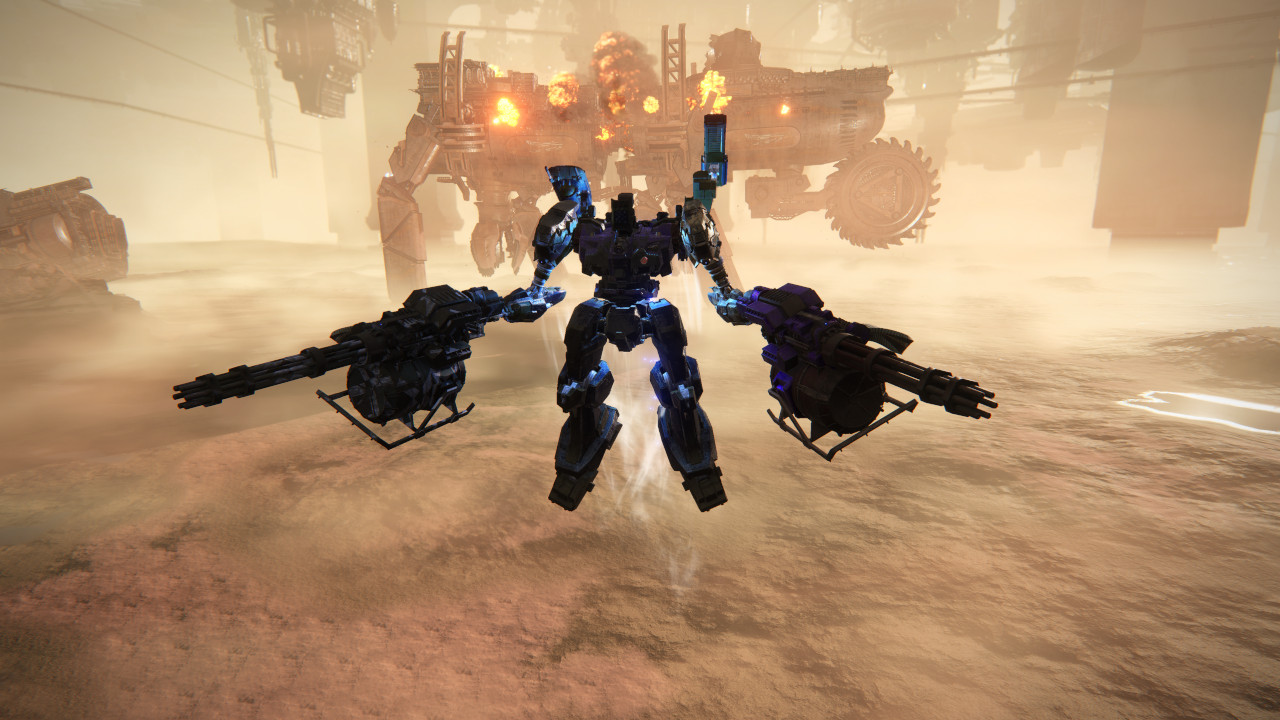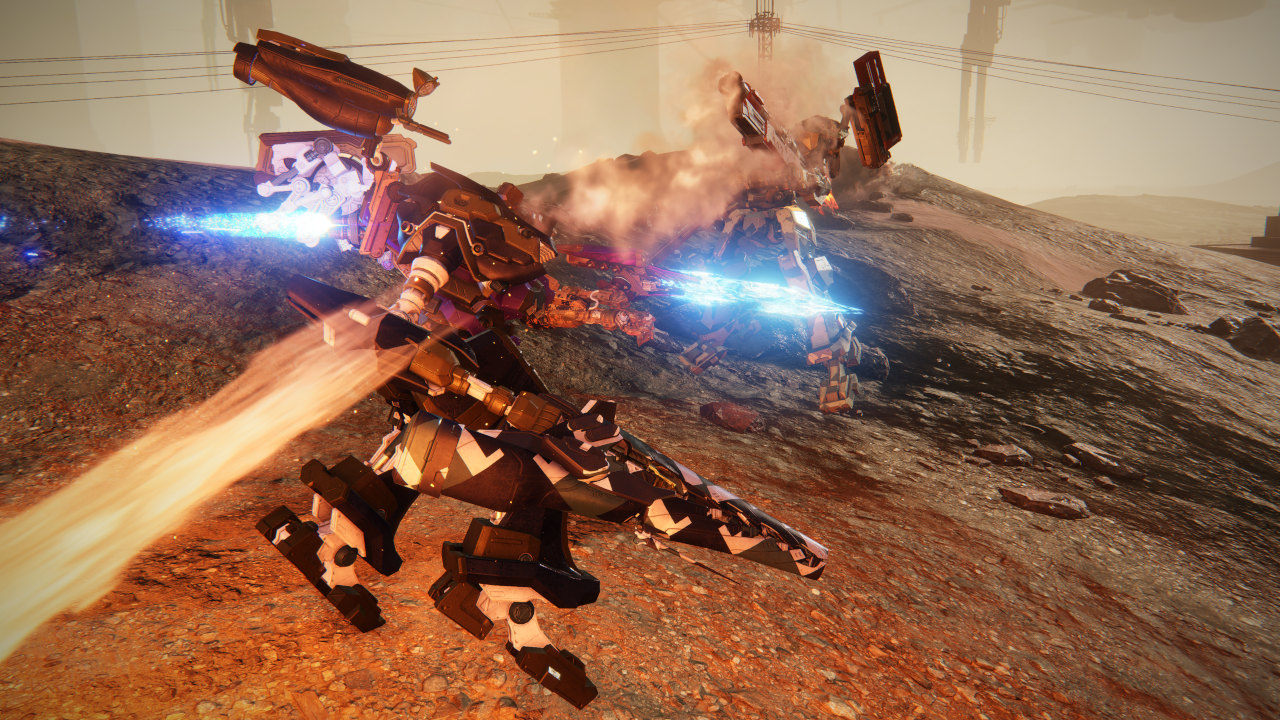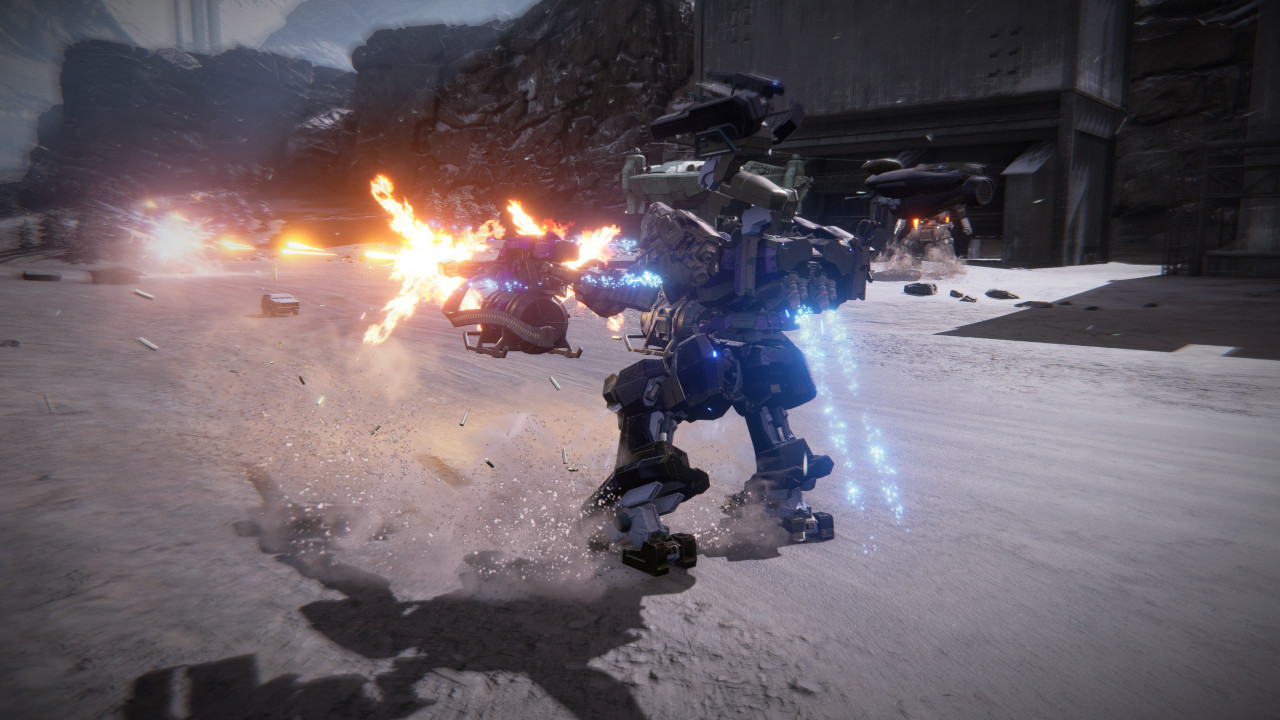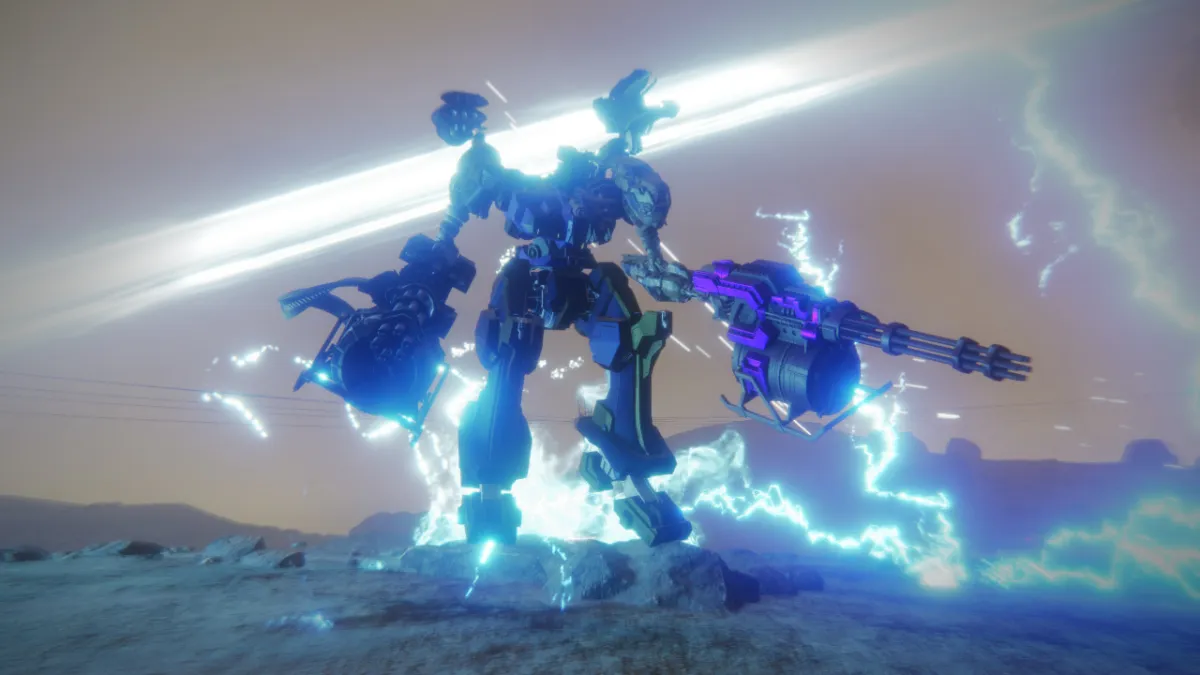It’s been a year and a half since FromSoftware captivated the world with its game-changing release of Elden Ring. The studio has already enjoyed a level of prestige other studios could only dream of thanks to genre-defining games like Dark Souls and Sekiro: Shadows Die Twice. However, one franchise has laid dormant ever since this studio’s acclaim hit stratospheric heights. This is the case for Armored Core, which had gone ten years since the release of Verdict Day. I was fortunate enough to get a copy of the latest installment, Armored Core 6: Fires of Rubicon, and this is my review.
What Kind of Game is Armored Core 6?

Armored Core 6, much like the rest of the Armored Core series, is a Mecha action game. Much like many action games in this subgenre, levels are designed to be small missions on large, open maps with threats often emerging all around you. As the operator of a particularly powerful mech bearing the same name as the franchise, you enjoy omnidirectional movement control and a deadly multitude of weapons.
This results in a combination of flight, platforming, and rail shooter mechanics, in addition to close quarters, mid-range, and long-range combat. Your playstyle is accommodated by selecting weapons that fit these parameters best. If you like fighting over a long distance, perhaps a shoulder-mounted laser cannon is your best bet, along with a pulse shield to ward off counterattacks. If you like getting up close and personal, a laser sword and shotgun can be deadly in wearing down opponents’ defenses and taking chunks of their health, or “AP” in this game. Customization is deep, varied, and balanced, if a lot to take in.
Finally, the game has single-player missions with a central story, an online battle simulator named the “Nest” for PvP and an “Arena” where you battle AI opponents for in-game money and upgrades. The more of its modes you play, the more rewards and customization options you get, with replayability of varying levels depending on how much time you wish to sink into the PvP realm with other players.
A Ghoulish Gun for Hire

You begin the game as a mercenary illegally landing on Rubicon 3 seeking work and a new life, and most importantly, an identity. Turns out, C4-621 just doesn’t hit quite right, so you go searching among dead mercenaries for a license that isn’t about to expire, in order to adopt their name as your own.
The game’s particular use of circumstances and keen aware of human death despite this being fully bloodless is on full display. You’re a ghoulish gun for hire who finds himself thrown into missions where corporations seek to use and even attempt to sacrifice you as a pawn while typically scheming over one thing: the precious Coral resource hidden on the planet.
This is despite a horrific disaster where seemingly all the world’s Coral was ignited to the point of it turning the sky into a persistent, ominous inferno, as it turns out that not all Coral was lost all those decades ago. As hired gun 621, callsign “Raven” (also fitting, a scavenger of the dead) you’ll be put into numerous life-and-death situations over this mysterious resource, often with bite-sized missions and the occasional, epic boss battle to keep you on your toes.
World-Class Mecha Combat for Those With Patience to Learn

Armored Core 6 is a clear improvement for the franchise which has always boasted omni-directional movement and combat. It’s the most polished entry yet, which makes sense given the developing studio’s sterling reputation over the past decade. Those who played the Souls, Bloodborne, and Sekiro games will not be surprised by Armored Core 6’s world-class Mecha combat for those with the patience to learn it.
The game isn’t ostensibly hard to pick up and play, much like any of FromSoftware’s modern titles. This one is perhaps the hardest in terms of pure navigation and movement in the game world, but attacks are simple, immediately responsive, and have deadly efficiency when used right. Certain enemies are weak to certain attacks, such as bulky enemies buckling to a persistent barrage of gatling gun fire, while faster mech opponents must be dispatched with finesse and careful aim.
Everything makes sense, but it can be overwhelming for casual players looking to get the same satisfaction as there is from beating a major boss in Elden Ring. What I found, and people are welcome to debate this point, is that the game still boasts FromSoftware’s signature difficulty, but without the rewarding feeling of accomplishment and empowerment. Armored Core 6 lays out the blueprint to beating some key opponents (the final bosses of Chapters 1 and 2 are examples of this) and yet, you’ll still find that upon finally beating some opponents, you’ll want to take a break from the game.
Wanting to step away from the game after a tough fight isn’t bad, but it’s a far cry from the feeling of freedom to explore new areas opened up after beating the latest Dark Souls boss. Instead, in Armored Core 6, the mission often ends after these fights, with you getting some rewards, some dialogue, and back to the menu screen. Lather, rinse, repeat, deploy.
Mech Combat and Customization Have Never Looked So Good

I love a good Mecha series as it often has wildly varying designs that bask in the rule of cool. You can choose between biped, tetrapod, and tank tread-focused builds for your Armored Core, each with ascending levels of defensive capability while conversely sacrificing maneuverability. Not only can you choose your weapons, but you can customize arms, legs, torsos, and internal components as well as skills, known as “OS Tuning” in order to make a mech that suits your playstyle.
The result is clear: mech combat and customization have never looked so good. The textures are on point, there’s an amazing variety of color slider options and even patterns you can choose to make the ultimate mech of your dreams. The game also runs incredibly well, with HDR and Ray Tracing barely being an issue for the performance on next-gen consoles such as on my Series X where I reviewed the game. But if you look close enough, you can see how they achieved this optimization.
For starters, the buildings you see in this game beyond the large structures and tunnels you go through are often sparsely designed, meant for you to whizz past without seeing their details. This is a non-issue for action games, especially when all eyes are glued on your mech. But it’s one that’ll nonetheless be noticed. Beyond this, the game’s effects and animations are glorious, and getting the perfect kill shot, along with using the game’s photo mode to capture the moment, is just…chef’s kiss.
Finally, while this isn’t a visual component by itself, the use of sound design to accompany the game’s effects works greatly for the game. When you’re boosting along the ground it’s strangely satisfying to hear that punch of the jets in your limbs propel you forward, or the warning, whining beep of your OS letting you know an enemy is targeting you. The game does a great deal to immerse you in its systems without holding your hand, for better or for worse.
The Verdict: Mechanical Perfection At the Expense of a Sense of Wonder

Years and several Soulslike games later, FromSoftware revisits another of its iconic franchises and mostly soars with awesome visuals and combat. While difficulty is always going to be a factor in these games, the sudden challenge spikes will alienate those who lack the patience for finding the right build.
For those who are ready to look beyond these minor faults, they’ll find a mecha game that feels like an exemplary entry for this generation. It looks and feels amazing to play, even if it’s a fairly inaccessible subgenre with a complicated, sometimes overwhelming combat system. Armored Core 6 is the most polished mecha game I’ve ever played, coming a long way since the first time I laid eyes on Gungriffon for the Sega Saturn when I was a kid.












Published: Aug 23, 2023 10:01 am